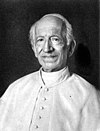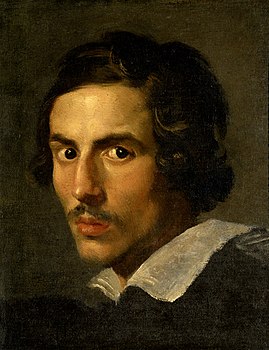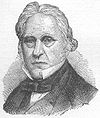
Back بوابة:الكنيسة الرومانية الكاثوليكية Arabic Уикипедия:Светци Bulgarian Portalo:Katolika Eklezio Esperanto Portal:Iglesia católica Spanish Portail:Catholicisme French Portál:Katolicizmus Hungarian Portale:Cattolicesimo Italian Portal:Katolik Malay Portal:Den katolske kirke NB Portal:Katolicyzm Polish
Introduction The Catholic Church, also known as the Roman Catholic Church, is the largest Christian church, with 1.28 to 1.39 billion baptized Catholics worldwide as of 2024. It is among the world's oldest and largest international institutions, and has played a prominent role in the history and development of Western civilization. The church consists of 24 sui iuris churches, including the Latin Church and 23 Eastern Catholic Churches, which comprise almost 3,500 dioceses and eparchies located around the world. The pope, who is the bishop of Rome, is the chief pastor of the church. The Diocese of Rome, known as the Holy See, is the central governing authority of the church. The administrative body of the Holy See, the Roman Curia, has its principal offices in Vatican City, a small independent city-state and enclave within the Italian capital city of Rome, of which the pope is head of state. The core beliefs of Catholicism are found in the Nicene Creed. The Catholic Church teaches that it is the one, holy, catholic and apostolic church founded by Jesus Christ in his Great Commission, that its bishops are the successors of Christ's apostles, and that the pope is the successor to Saint Peter, upon whom primacy was conferred by Jesus Christ. It maintains that it practises the original Christian faith taught by the apostles, preserving the faith infallibly through scripture and sacred tradition as authentically interpreted through the magisterium of the church. The Roman Rite and others of the Latin Church, the Eastern Catholic liturgies, and institutes such as mendicant orders, enclosed monastic orders and third orders reflect a variety of theological and spiritual emphases in the church. Of its seven sacraments, the Eucharist is the principal one, celebrated liturgically in the Mass. The church teaches that through consecration by a priest, the sacrificial bread and wine become the body and blood of Christ. The Virgin Mary is venerated as the Perpetual Virgin, Mother of God, and Queen of Heaven; she is honoured in dogmas and devotions. Catholic social teaching emphasizes voluntary support for the sick, the poor, and the afflicted through the corporal and spiritual works of mercy. The Catholic Church operates tens of thousands of Catholic schools, universities and colleges, hospitals, and orphanages around the world, and is the largest non-government provider of education and health care in the world. Among its other social services are numerous charitable and humanitarian organizations. (Full article...) Selected article
 Catholic social teaching comprises those aspects of Catholic doctrine which relate to matters dealing with the collective aspect of humanity. The foundations of modern Catholic social teaching are widely considered to have been laid by Pope Leo XIII's 1891 encyclical letter Rerum Novarum. A distinctive feature of Catholic social teaching is its concern for the poorest members of society. This concern echoes elements of the Jewish law and of the prophetic books of the Old Testament, and recalls the teachings of Jesus Christ recorded in the New Testament, such as his declaration that "whatever you have done for one of these least brothers of Mine, you have done for Me." Another distinctive feature of Catholic social doctrine is the way in which it has consistently critiqued modern social and political ideologies both of the left and of the right: communism, conservatism, socialism, libertarianism, capitalism, liberalism and Nazism have all been condemned, at least in their pure forms, by the Popes at one time or another.
Selected image
 Credit: Gian Lorenzo Bernini, self-portrait
Gian Lorenzo Bernini (1598 – 1680) was an Italian artist who worked principally in Rome. He was the leading sculptor of his age and a prominent figure in the emergence of Roman Baroque architecture. He was a successor to Michelangelo as the architect of Saint Peter's Basilica; his design of the Piazza San Pietro in front of the Basilica is one of his most innovative and successful architectural designs. Selected biography
 James II and VII (14 October 1633 – 16 September 1701)was King of England, King of Scots, and King of Ireland from 6 February 1685 to 11 December 1688. He was the last Roman Catholic monarch to reign over the Kingdoms of England, Scotland, and Ireland. Many of his subjects distrusted his religious policies and autocratic tendencies, leading a group of them to depose him in the Glorious Revolution in 1688. He was replaced not by his Roman Catholic son, James Francis Edward, but by his Protestant daughter and son-in-law, Mary II and William III, who became joint rulers in 1689. James made one serious attempt to recover his crowns, when he landed in Ireland in 1689. After his defeat at the Battle of the Boyne in the summer of 1690, James returned to France, living out the rest of his life under the protection of his cousin and ally, King Louis XIV.
Did you know...
Related portalsFeast Day of July 13
Selected quote

News
SubcategoriesTopics
The Holy Bible:
Particular Churches (grouped by liturgical rite):
Things you can do
External resourcesWikiProjectsAssociated WikimediaThe following Wikimedia Foundation sister projects provide more on this subject:
Discover Wikipedia using portals |
© MMXXIII Rich X Search. We shall prevail. All rights reserved. Rich X Search

































